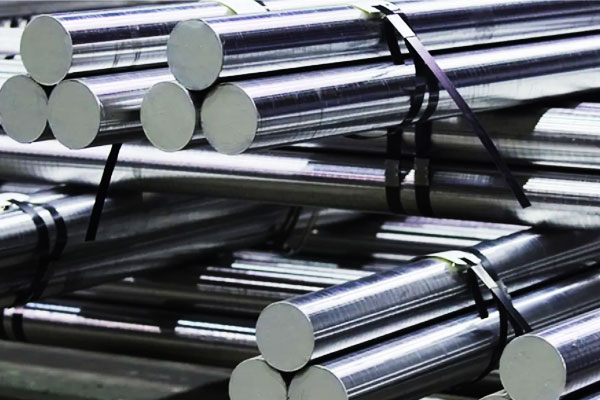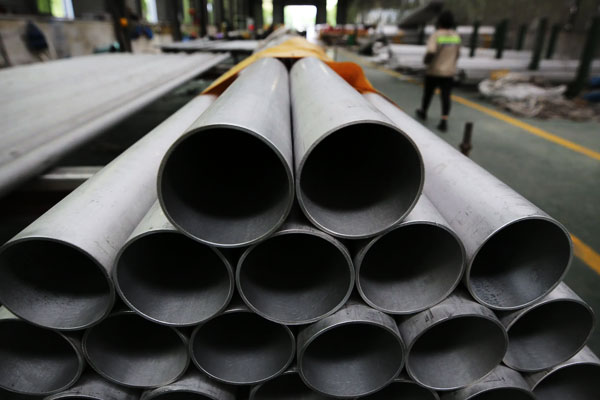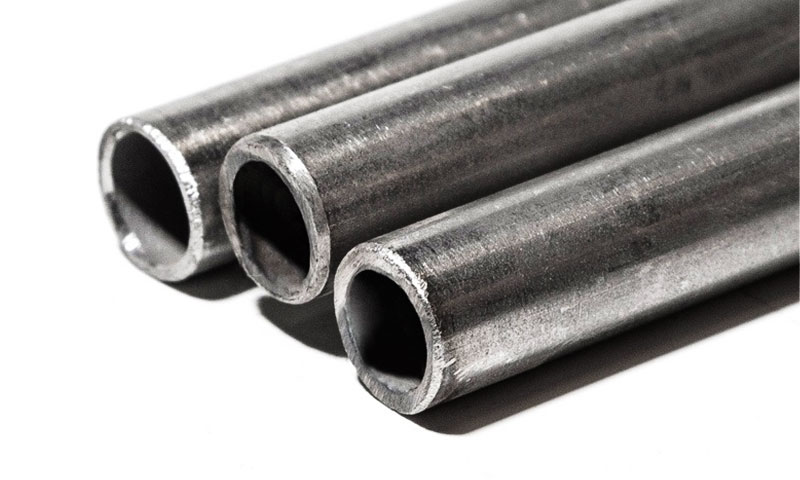1. Introduction
Nickel 201 (UNS N02201) is a commercially pure nickel alloy that is widely recognized for its exceptional corrosion resistance, excellent thermal stability, and outstanding formability.
Specified under ASTM B162 for plate, sheet, and strip, Nickel 201 is essentially a low-carbon variant of Nickel 200.
The reduction in carbon content significantly enhances its resistance to intergranular embrittlement and maintains mechanical integrity at elevated temperatures.
Its combination of purity, ductility, and high corrosion resistance makes it an essential material in chemical processing, marine environments, aerospace applications, and high-temperature industrial operations.
2. What Is ASTM B162 N02201 Nickel Alloy?
ASTM B162 N02201, commonly known as Nickel 201, is a commercially pure nickel alloy standardized for plate, sheet, and strip products.
It is essentially a low-carbon version of Nickel 200, with the carbon content reduced to a maximum of 0.02 wt% to enhance resistance to intergranular corrosion and thermal embrittlement during high-temperature service.

Nickel 201 is characterized by:
- High purity nickel content (≥99 wt%), ensuring excellent corrosion resistance in neutral, alkaline, and mildly oxidizing environments.
- Low carbon content, which prevents the formation of nickel carbides at grain boundaries, maintaining ductility and toughness during prolonged heat exposure.
- Excellent formability, making it suitable for deep drawing, spinning, and complex fabrication operations.
- Superior thermal stability, allowing continuous operation at elevated temperatures without significant loss of mechanical properties.
3. Chemical Composition of Nickel 201
Nickel 201 (UNS N02201) is a commercially pure nickel alloy with carefully controlled impurities and a low carbon content to improve high-temperature performance and corrosion resistance.
The chemical composition is standardized under ASTM B162 to ensure consistent properties for industrial applications.
| Element | Typical Content (wt%) | Notes |
| Nickel (Ni) | ≥ 99.0 | Base element, ensures corrosion resistance and ductility |
| Carbon (C) | ≤ 0.02 | Low carbon content reduces carbide formation, preventing intergranular corrosion |
| Iron (Fe) | ≤ 0.40 | Residual, minor influence on corrosion resistance |
| Copper (Cu) | ≤ 0.25 | Impurity level, can slightly improve corrosion resistance in specific environments |
| Manganese (Mn) | ≤ 0.10 | Minor impurity, minimal effect on mechanical properties |
| Silicon (Si) | ≤ 0.10 | Residual element, contributes minimally to oxidation resistance |
| Sulfur (S) | ≤ 0.01 | Controlled to avoid embrittlement and maintain ductility |
| Phosphorus (P) | ≤ 0.01 | Low phosphorus ensures good toughness and weldability |
Key Insights:
- Nickel Dominance: Over 99 wt% nickel ensures excellent chemical stability in corrosive media.
- Low Carbon: The ≤0.02 wt% carbon prevents the precipitation of nickel carbides at grain boundaries during prolonged high-temperature service, which is critical for stress corrosion resistance.
- Controlled Impurities: Elements like iron, copper, and manganese are kept at minimal levels to balance cost, corrosion resistance, and mechanical performance.
4. Physical Properties of UNS N02201
| Property | Value |
| Density | 8.89 g/cm³ |
| Melting range | 1435–1446 °C |
| Thermal conductivity | 90 W/m·K |
| Electrical resistivity | 7 μΩ·cm |
| Magnetic permeability | Slightly magnetic below 354 °C (Curie point) |
| Coefficient of thermal expansion | 13.3 μm/m·°C (20–100 °C) |
5. Mechanical Properties of Nickel 201
Nickel 201 (UNS N02201) exhibits a combination of moderate strength, excellent ductility, and toughness, making it a versatile material for demanding industrial applications.
| Property | Typical Value | Test Condition / Notes |
| Tensile Strength (σᵤ) | 480–620 MPa (70–90 ksi) | Annealed condition |
| Yield Strength (σ₀.₂) | 150–275 MPa (22–40 ksi) | 0.2% offset |
| Elongation (A₅₀) | 30–50 % | Measured on 50 mm gauge length |
| Reduction of Area (RA) | 55–65 % | Indicates ductility and toughness |
| Hardness (HRB) | 70–100 | Rockwell B scale, annealed condition |
| Shear Strength | ~310 MPa | Typical value for wrought product |
| Modulus of Elasticity (E) | 200 GPa | Comparable to structural steels |
| Poisson’s Ratio | 0.31 | Standard for nickel alloys |
Key Mechanical Characteristics:
- Ductility: Nickel 201 can undergo significant plastic deformation before failure, making it suitable for forming, bending, and deep-drawing operations.
- Toughness: Maintains excellent fracture toughness over a wide temperature range, from cryogenic conditions to approximately 600 °C.
- Work Hardening: Can be strengthened through cold working, providing flexibility in design for mechanical components.
- Fatigue Resistance: High ductility and low impurity levels contribute to good fatigue performance in cyclic loading environments.
6. Corrosion Resistance & Temperature Performance
Nickel 201 (UNS N02201) is highly regarded for its exceptional corrosion resistance and thermal stability, especially in environments containing neutral and reducing chemicals.
Its performance is superior to many commercial metals due to its high nickel purity (≥ 99.5%) and low carbon content (< 0.02%), which prevent sensitization and carbide precipitation at elevated temperatures.
Corrosion Resistance
Nickel 201 demonstrates resistance to a wide range of corrosive agents, making it a material of choice for chemical processing, marine, and high-purity applications.
| Environment | Corrosion Behavior | Comments |
| Caustic Alkalis (NaOH, KOH) | Excellent | Minimal corrosion even at boiling temperatures; used for caustic evaporators and heat exchangers. |
| Neutral & Reducing Salts | Excellent | Stable in neutral chloride, sulfate, and nitrate environments. |
| Acids (Hydrochloric, Sulfuric) | Moderate to Good | Resistant in dilute concentrations; corrosion increases with higher acidity and temperature. |
| Oxidizing Environments (Nitric acid, Halogens) | Poor | Not suitable for strong oxidizing acids or halogen gases; Nickel 200/201 are prone to attack. |
| Seawater & Brine | Good | Performs well under stagnant and flowing conditions but not as well as copper-nickel alloys in high-velocity seawater. |
| Organic Compounds (Acetic, Formic acids) | Excellent | Stable under most organic acid exposure, making it ideal for process equipment in the chemical industry. |
Mechanism of Resistance:
Nickel 201’s corrosion resistance is derived from the formation of a thin, adherent oxide film on its surface, which passivates the metal and inhibits further attack.
Its low carbon content prevents intergranular corrosion, ensuring longevity in thermal cycling or welding environments.
Temperature Performance
Nickel 201 retains mechanical integrity and chemical stability across a wide temperature spectrum, from cryogenic to moderate high-temperature conditions.
| Temperature Range | Behavior | Typical Applications |
| −200 °C to 0 °C | Outstanding toughness and ductility | Cryogenic storage vessels, liquid gas handling systems |
| Ambient to 300 °C | Maintains strength and corrosion resistance | Chemical and food processing equipment |
| 300 °C to 600 °C | Stable against graphitization (unlike Nickel 200) | Heat exchangers, furnace components |
| > 600 °C | Gradual reduction in strength; risk of oxidation increases | Limited use, protective coatings recommended |
Key Advantage Over Nickel 200:
Nickel 201’s lower carbon level (< 0.02%) significantly improves its graphitization resistance, enabling safe operation up to 600 °C without embrittlement—whereas Nickel 200 is typically limited to 315 °C.
7. Fabrication, Forming, and Heat Treatment
Nickel 201 (UNS N02201) is highly valued in the fabrication industry for its excellent formability, weldability, and thermal stability.
Its low carbon content (< 0.02 %) makes it less susceptible to carbide precipitation during heating, which enhances its workability and resistance to intergranular corrosion during forming and welding.

Fabrication and Machinability
Nickel 201 can be readily fabricated using conventional methods employed for austenitic stainless steels and other high-nickel alloys.
| Fabrication Process | Characteristics | Best Practices |
| Machining | Produces clean surfaces with moderate tool wear; slightly harder than copper but softer than most steels. | Use high-speed steel (HSS) or carbide-tipped tools, low cutting speeds (15–25 m/min), and generous lubrication. |
| Forming | Excellent ductility in both hot and cold conditions; minimal risk of cracking. | Perform cold working at room temperature for precision forming. For heavy forming, use hot working between 870–1230 °C. |
| Shearing / Punching | Easy to cut and punch due to moderate hardness (~70–85 HRB). | Use sharp tools and adequate clearance to prevent edge tearing. |
| Forging | Uniform grain structure maintained during hot working. | Heat gradually to 1150–1230 °C, finish forging above 870 °C, followed by rapid cooling. |
Machinability Index:
Nickel 201’s machinability is rated at 20–25 % of free-cutting steel (AISI 1212), reflecting the need for sharp tools, controlled speeds, and consistent cooling to avoid work hardening.
Forming Characteristics
Nickel 201’s high ductility and moderate strength make it ideal for deep drawing, spinning, and bending operations.
- Cold Forming: The alloy shows minimal spring-back and strain hardening; post-forming annealing restores ductility.
- Hot Forming: Effective between 870–1230 °C. Work should not be done below 870 °C to prevent surface cracking.
- Annealing Requirement: After heavy deformation or cold reduction (> 15 %), annealing is recommended to relieve internal stress.
Typical Forming Applications:
- Heat exchanger tubing
- Caustic evaporator trays
- Chemical process vessels
Welding
Nickel 201 exhibits excellent weldability using most conventional processes:
- Preferred methods: GTAW (TIG), GMAW (MIG), SMAW, and resistance welding.
- Filler metals: Commonly Nickel 201 (ERNi-1) or Nickel 200 filler rods are used.
- Precautions:
-
- Preheating is not required.
- Post-weld heat treatment is optional unless required for dimensional control.
- Avoid excessive heat input to prevent grain growth and oxidation.
Typical weld performance:
Tensile strength of welded joints remains at ≥ 90 % of the base metal, and corrosion resistance is largely unaffected if proper shielding is maintained.
Heat Treatment
Heat treatment of Nickel 201 is primarily used to restore ductility, relieve internal stress, and refine grain structure after fabrication.
| Heat Treatment Type | Temperature Range | Cooling Method | Purpose |
| Annealing | 650–900 °C | Air or water cooling | Relieves strain from cold work, restores ductility |
| Stress Relieving | 480–650 °C | Air cooling | Reduces residual stress after machining or welding |
| Solution Annealing | 760–870 °C | Rapid quenching | Ensures uniform microstructure and corrosion resistance |
Caution:
Avoid prolonged exposure above 600 °C in impure atmospheres to prevent surface oxidation and contamination.
8. Advantages & Limitations of Nickel 201 Nickel Alloy
Nickel 201 (UNS N02201) is a commercially pure wrought nickel designed to offer superior performance in chemically aggressive and high-temperature environments.
Advantages of Nickel 201
Nickel 201’s unique blend of chemical purity, ductility, and metallurgical stability make it one of the most reliable materials for demanding industrial use.
| Category | Advantage | Technical Explanation / Benefit |
| Corrosion Resistance | Excellent resistance to caustic alkalis, neutral salts, and dry gases. | Particularly resistant to sodium hydroxide, potassium hydroxide, and anhydrous ammonia—nickel oxide film formation provides durable passivation. |
| Thermal Stability | Retains mechanical properties up to ~600 °C. | Unlike Nickel 200, which suffers graphitization above 315 °C, Nickel 201’s reduced carbon (< 0.02 %) prevents carbide precipitation and intergranular embrittlement. |
| Fabrication and Formability | Outstanding cold- and hot-working characteristics. | Can be easily drawn, spun, deep-formed, or forged without cracking; minimal work-hardening compared to stainless steels. |
| Weldability | Excellent weldability with gas tungsten arc (GTAW), gas metal arc (GMAW), and resistance methods. | Weld joints retain up to 90–95 % of base-metal strength and corrosion resistance when proper filler (ERNi-1) is used. |
Electrical & Thermal Conductivity |
High electrical conductivity (~22 % IACS) and thermal conductivity (~61 W/m·K). | Ideal for electrical components, heating elements, and conductive chemical equipment. |
| Magnetic Properties | Non-magnetic in annealed condition. | Suitable for sensitive magnetic and instrumentation environments. |
| Purity and Cleanliness | > 99.6 % Ni content ensures minimal contamination in high-purity processes. | Used in semiconductor, food, and pharmaceutical industries where metallic contamination must be avoided. |
| Resistance to Reducing Environments | Stable in hydrogen and CO₂ atmospheres. | Maintains ductility and mechanical integrity even during exposure to reducing gases. |
Limitations of Nickel 201
Despite its excellent characteristics, Nickel 201 is not a universal alloy. Its use is limited by mechanical and environmental factors that must be carefully evaluated during material selection.
| Category | Limitation | Explanation / Mitigation |
| Mechanical Strength | Relatively low yield strength (~60–90 MPa at room temperature). | Not suitable for heavy structural applications; often reinforced with external supports or cladding. |
| Oxidation Resistance | Moderate resistance in air above 600 °C. | Prolonged exposure at high temperatures causes surface oxidation and scaling; protective coatings recommended. |
| Cost | Higher cost than carbon steel or stainless steel. | Justified only in highly corrosive or purity-critical environments. |
Sulfur & Halide Sensitivity |
Susceptible to attack in sulfur-containing or halogen environments (e.g., Cl₂, HCl, SO₂). | Avoid use in chlorinated or sulfur-bearing atmospheres; select Nickel Alloy 600 or Alloy 625 instead. |
| Work Hardening | Work-hardens during cold forming. | Requires intermediate annealing for extensive deformation. |
| Limited High-Temperature Strength | Loses tensile strength rapidly above 650 °C. | Use Nickel-based superalloys (e.g., Inconel 600, Hastelloy C-22) for high-stress or elevated-temperature applications. |
9. Applications of ASTM B162 N02201
Nickel 201 is widely used in industries that demand corrosion resistance and formability:
- Chemical processing: caustic soda evaporators, alkaline tanks
- Marine applications: seawater equipment, offshore components
- Heat exchangers & condensers
- Aerospace: spinning and drawn components
- Pressure vessels & boilers requiring low-carbon, corrosion-resistant materials
10. Comparison to Similar Nickel Alloys
Nickel 201 (UNS N02201) is part of a family of commercially pure nickel alloys that also includes Nickel 200 (UNS N02200) and several nickel-based alloys such as Alloy 400 (Monel 400), Alloy 600 (Inconel 600), and Alloy 625 (Inconel 625).
Comparative Table – Nickel 201 vs. Other Nickel Alloys
| Property / Feature | Nickel 200 (UNS N02200) | Nickel 201 (UNS N02201) | Monel 400 (UNS N04400) | Inconel 600 (UNS N06600) | Inconel 625 (UNS N06625) |
| Nominal Composition (wt%) | Ni ≥ 99.5, C ≤ 0.15 | Ni ≥ 99.6, C ≤ 0.02 | Ni ~ 66, Cu ~ 31, Fe ~ 2 | Ni ~ 72, Cr ~ 15.5, Fe ~ 8 | Ni ~ 61, Cr ~ 21.5, Mo ~ 9, Nb + Ta ~ 3.6 |
| Melting Range (°C) | 1435–1446 | 1435–1446 | 1300–1350 | 1354–1413 | 1290–1350 |
| Max Service Temp (°C) | Up to 315 °C | Up to 600 °C | Up to 550 °C | Up to 1100 °C | Up to 982 °C (creep-resistant) |
| Density (g/cm³) | 8.89 | 8.89 | 8.80 | 8.47 | 8.44 |
| Tensile Strength (MPa, annealed) | ~ 370 | ~ 380 | ~ 550 | ~ 655 | ~ 827 |
| Yield Strength (MPa, 0.2% offset) | ~ 105 | ~ 100 | ~ 240 | ~ 240 | ~ 414 |
| Elongation (%) | 45 | 45 | 35 | 40 | 30 |
| Corrosion Resistance | Excellent in alkalis; moderate in acids | Excellent in alkalis; improved at high T | Excellent in seawater, hydrofluoric acid | Excellent in oxidizing & reducing media | Outstanding in oxidizing, reducing, and chloride environments |
| Weldability / Formability | Excellent | Excellent | Good | Good | Moderate (work hardening) |
| Primary Use Cases | Low-temperature caustic systems, food processing | High-temperature caustic service, chemical purity systems | Marine, pump shafts, HF acid service | Heat exchangers, furnace tubes, nuclear reactors | Aerospace, chemical process, seawater piping |
11. Conclusion
Nickel 201 (UNS N02201) under ASTM B162 is a high-purity, low-carbon nickel alloy offering excellent corrosion resistance, thermal stability, and formability.
It is especially suited for chemical, marine, aerospace, and high-temperature applications where low carbon is critical to prevent intergranular embrittlement.
While mechanical strength is moderate, its durability, reliability, and fabrication versatility make it a preferred material in demanding industrial environments.
FAQs
What is the difference between ASTM B162 N02201 and N02200?
The primary difference is carbon content: N02201 has a maximum carbon of 0.02% (vs. 0.15% for N02201? No—correct: N02200 has 0.15% max C).
N02201’s low C enhances weldability and intergranular corrosion resistance, making it better for welded joints and cryogenics. N02200 is lower cost for non-welded applications.
What is the maximum service temperature for N02201?
N02201 can operate continuously at up to 600°C (1112°F) while retaining >40% elongation. Above 600°C, tensile strength decreases rapidly, limiting use to intermittent exposure.
Is N02201 weldable?
Yes—N02201 is readily weldable via GTAW (TIG) and GMAW (MIG) using N02201 filler metals (ERNi-1/ENi-1).
Post-weld heat treatment is not required for most applications due to low carbon content.
How does N02201 perform in seawater?
N02201 exhibits excellent seawater corrosion resistance, with a corrosion rate <0.02 mm/year—superior to 304 stainless steel (0.1 mm/year). It is ideal for marine cooling systems.
What certifications does N02201 hold for food contact?
N02201 complies with FDA 21 CFR Part 177.2600 (food contact) and EU Regulation (EC) No.
1935/2004, making it safe for food and pharmaceutical processing equipment.
Can N02201 be used in cryogenic applications?
Yes—N02201 retains high ductility (elongation >40%) at temperatures as low as -253°C (liquid hydrogen boiling point), making it suitable for cryogenic fuel tanks and superconducting systems.


